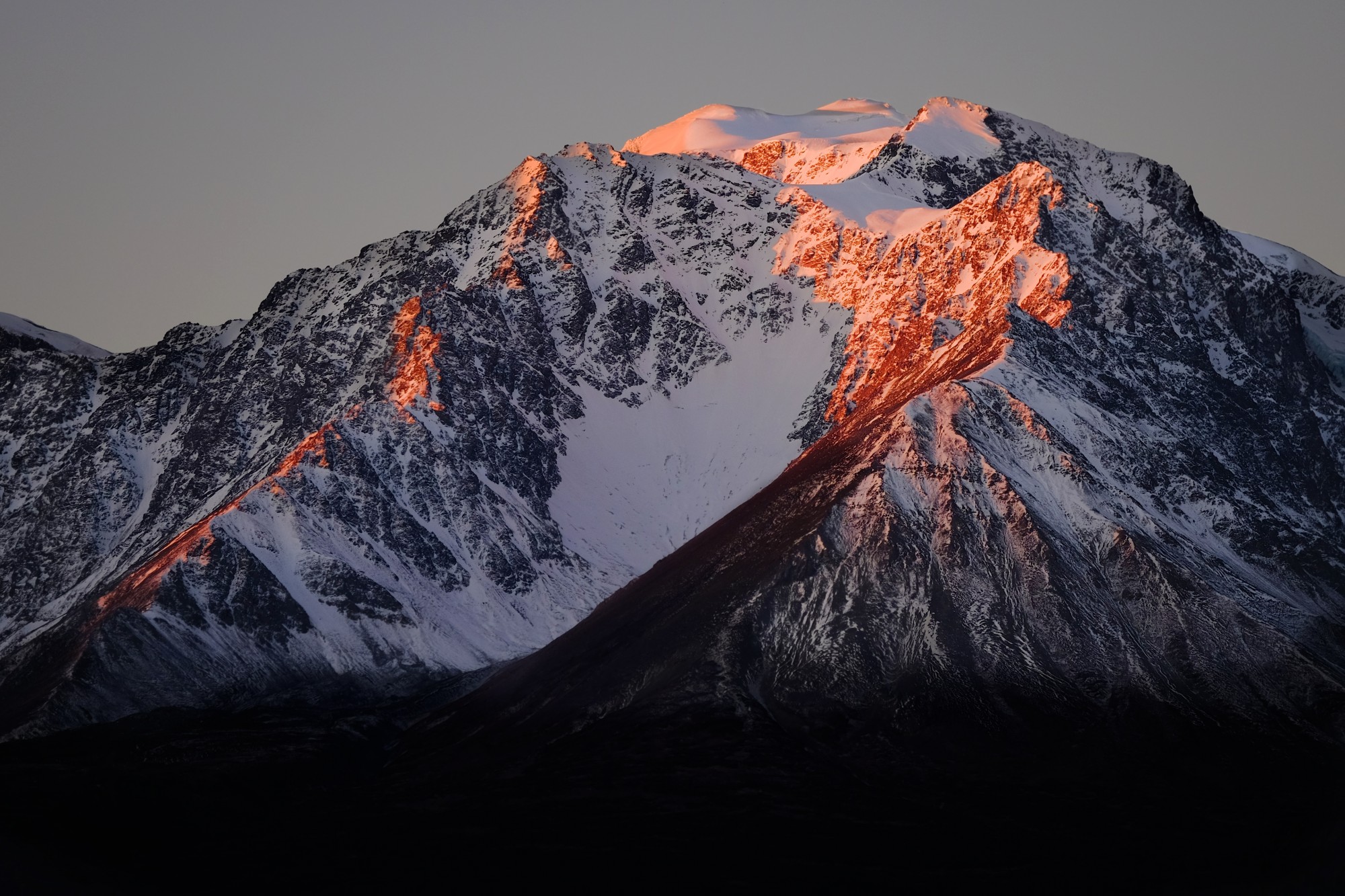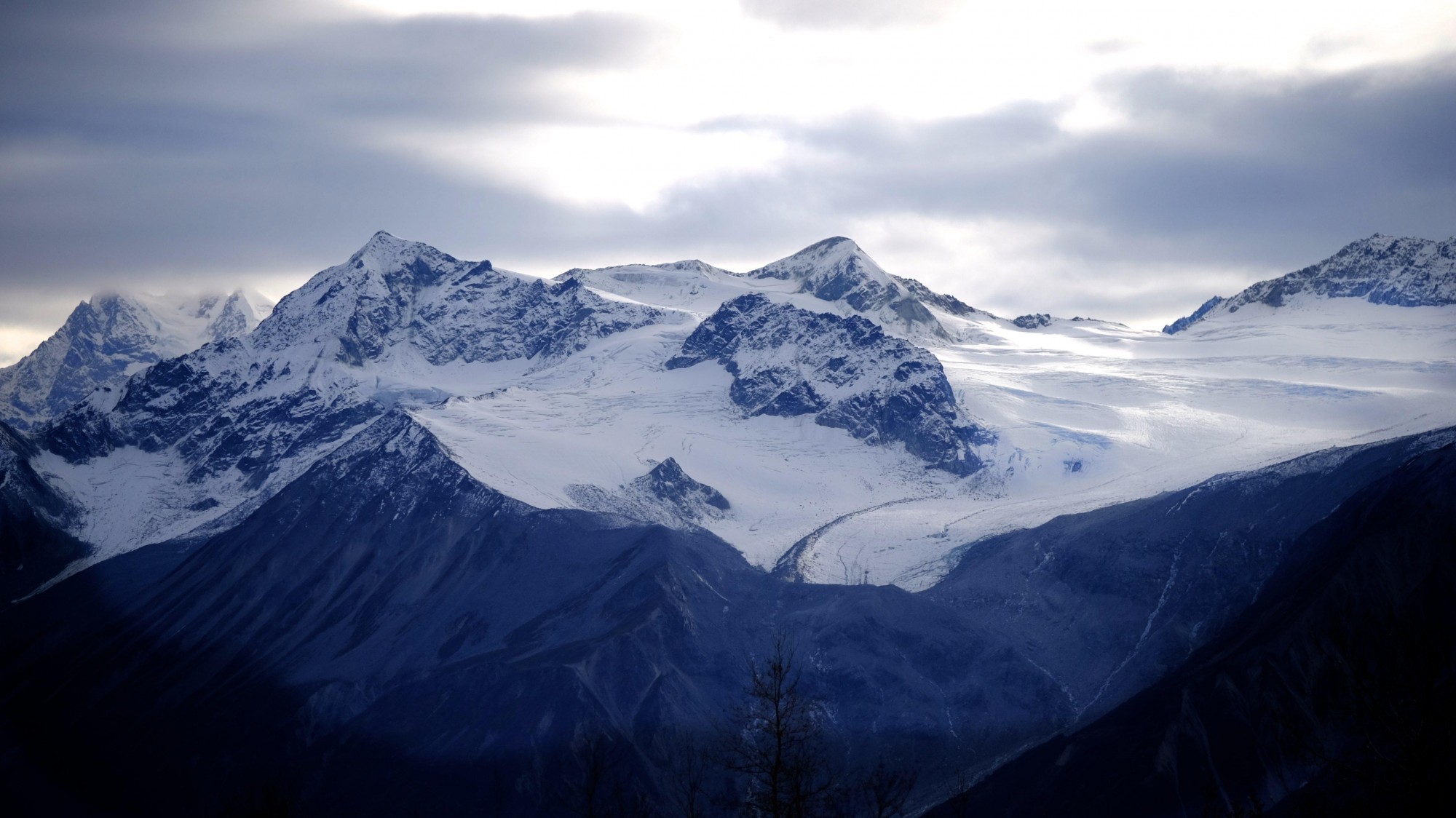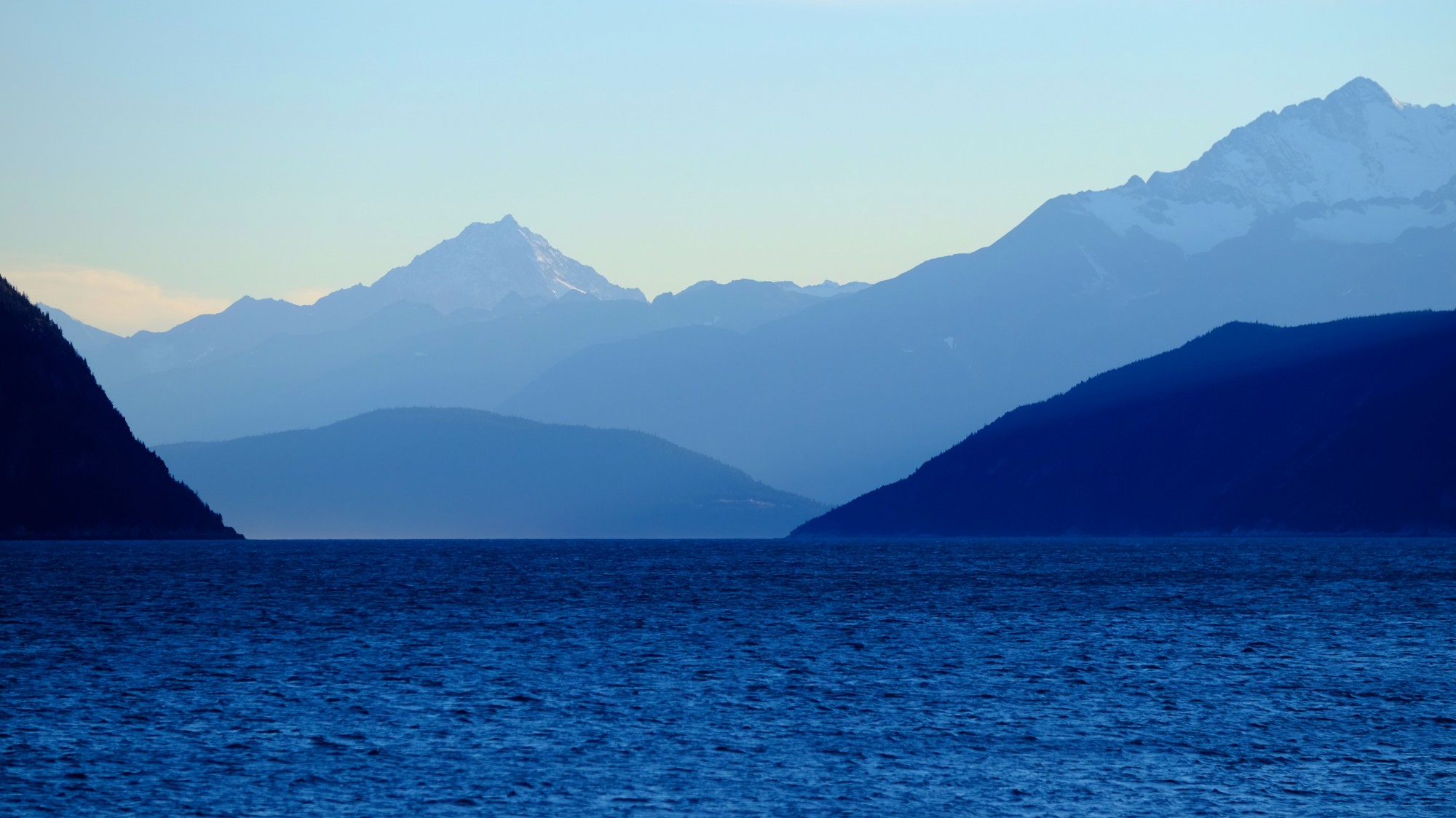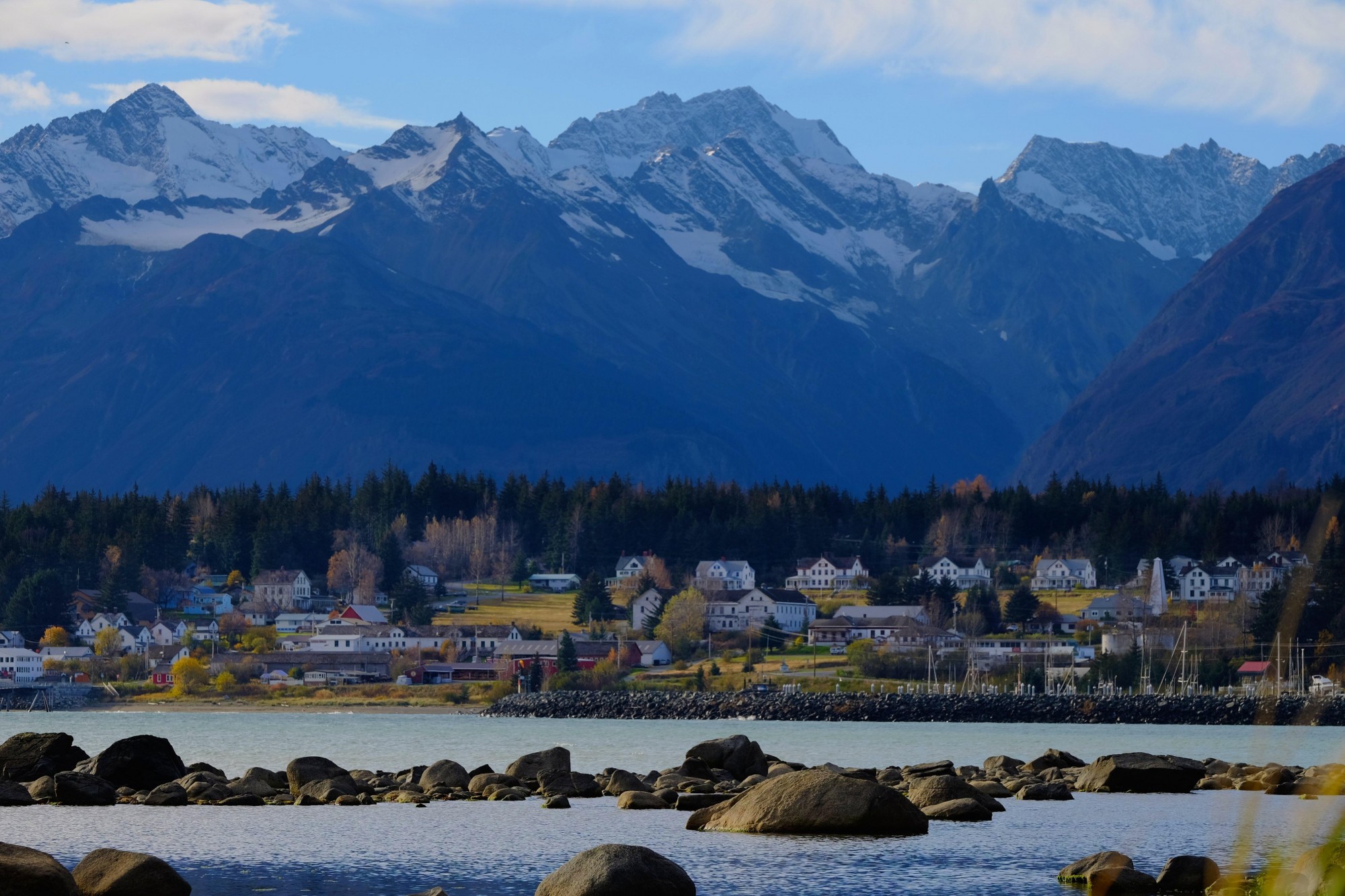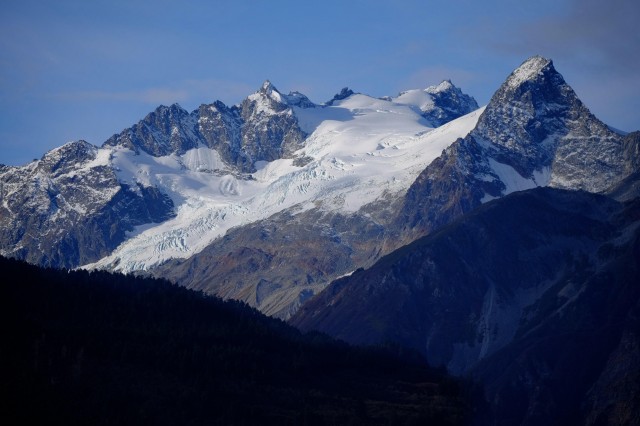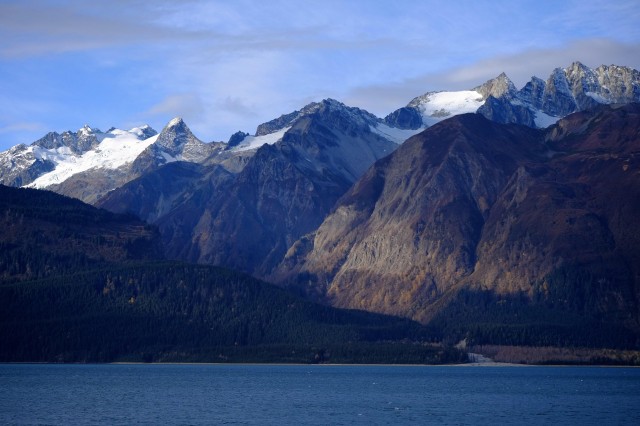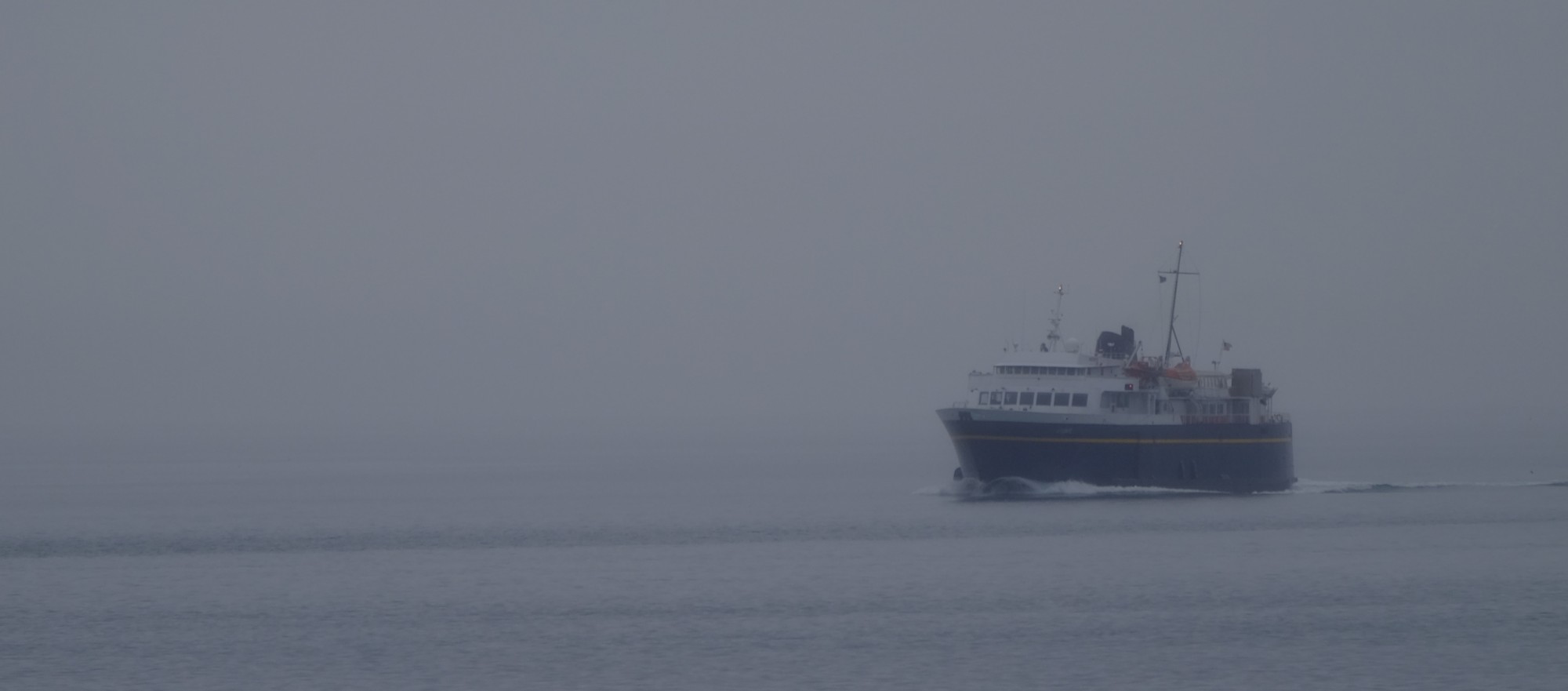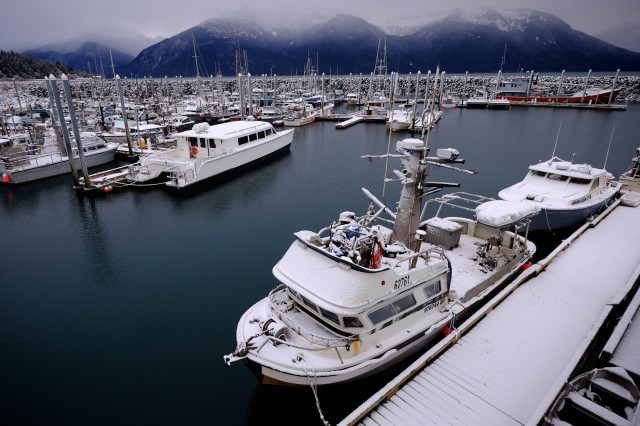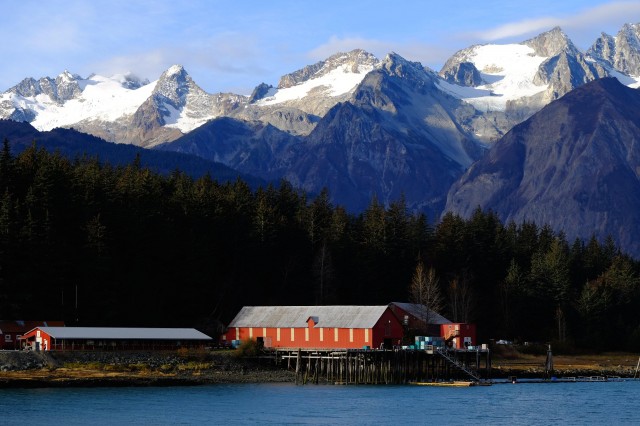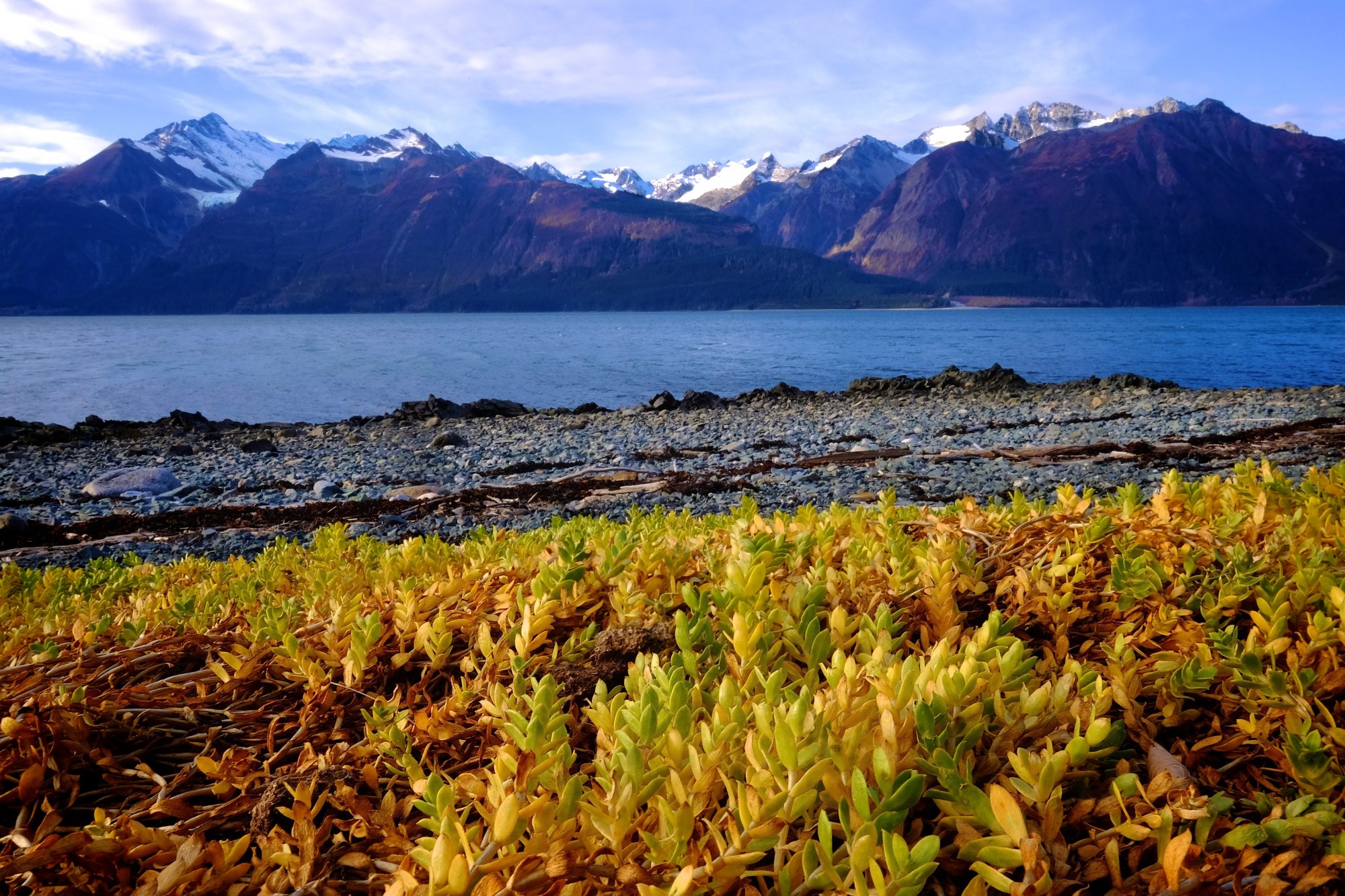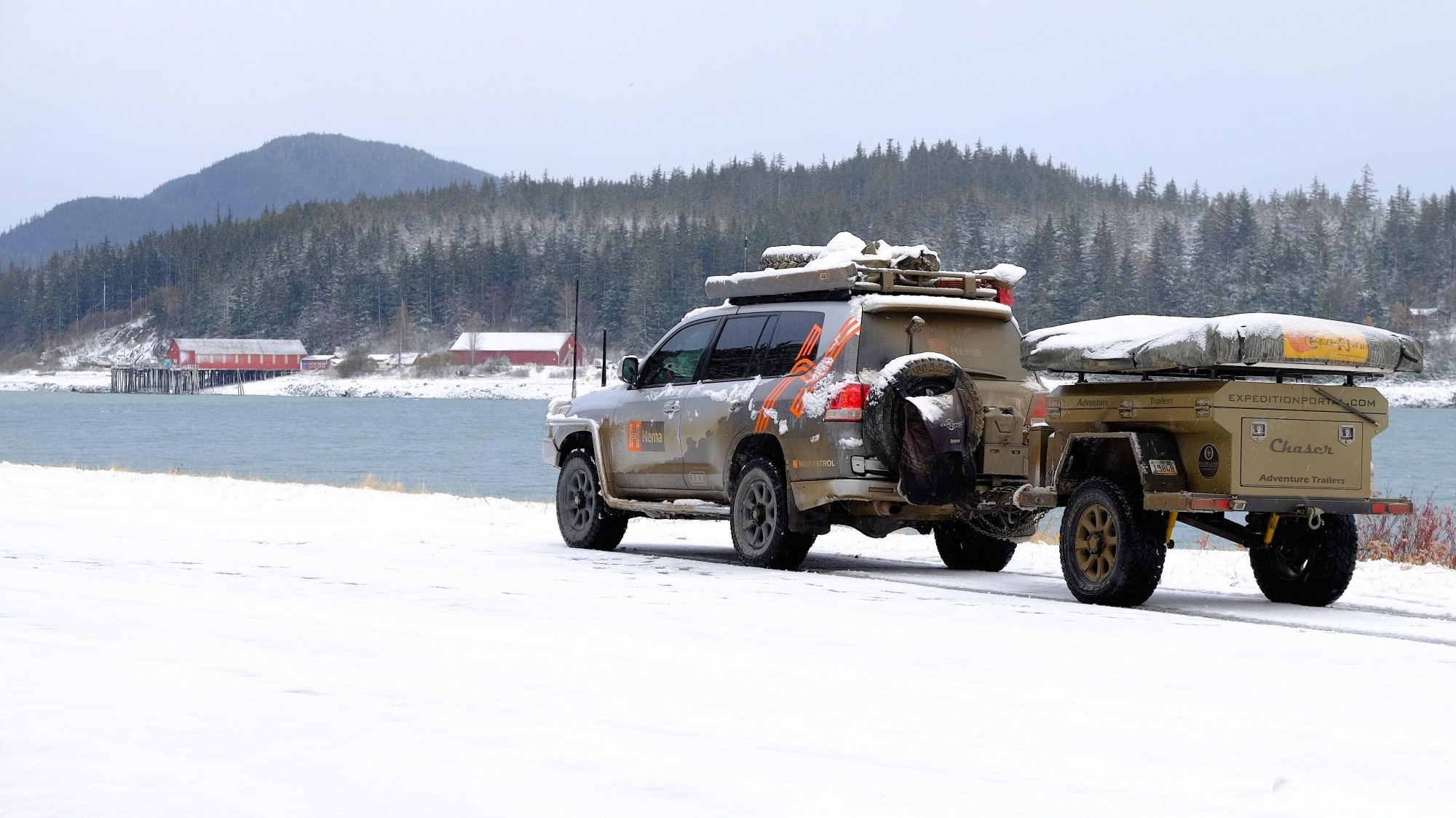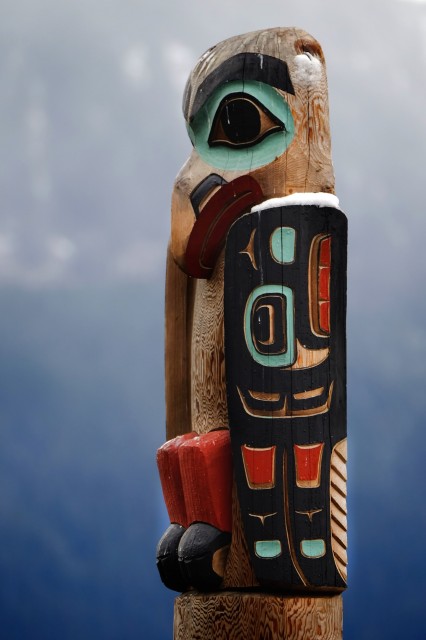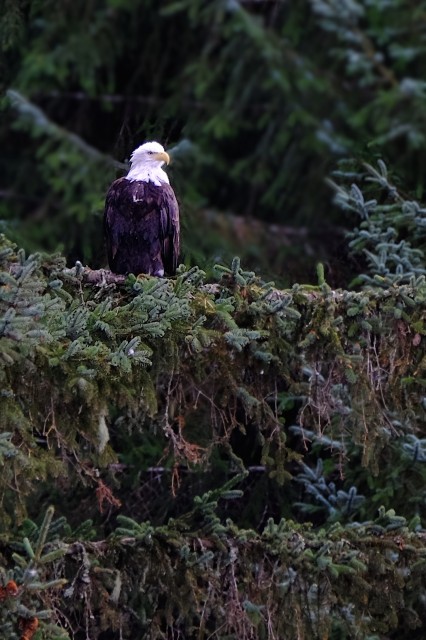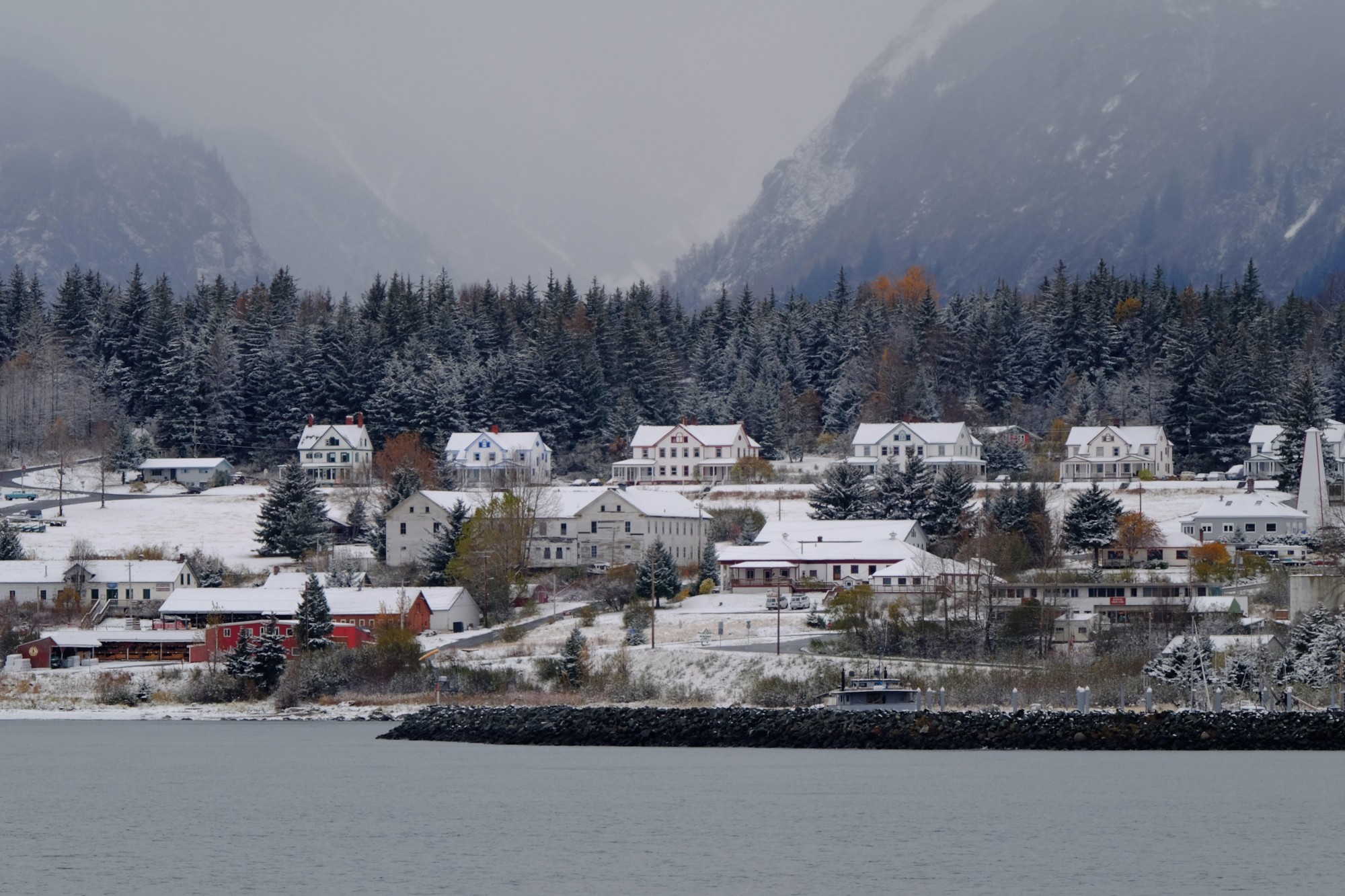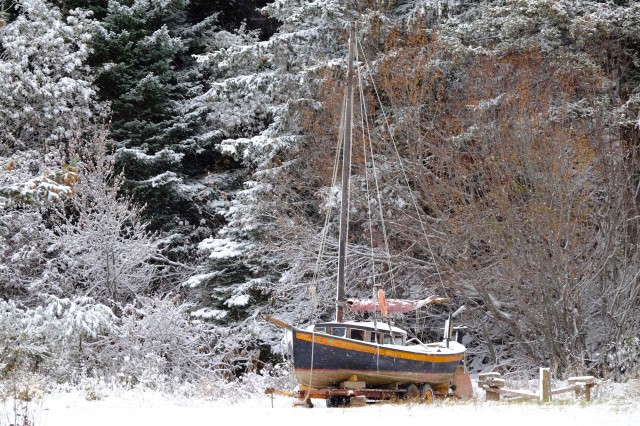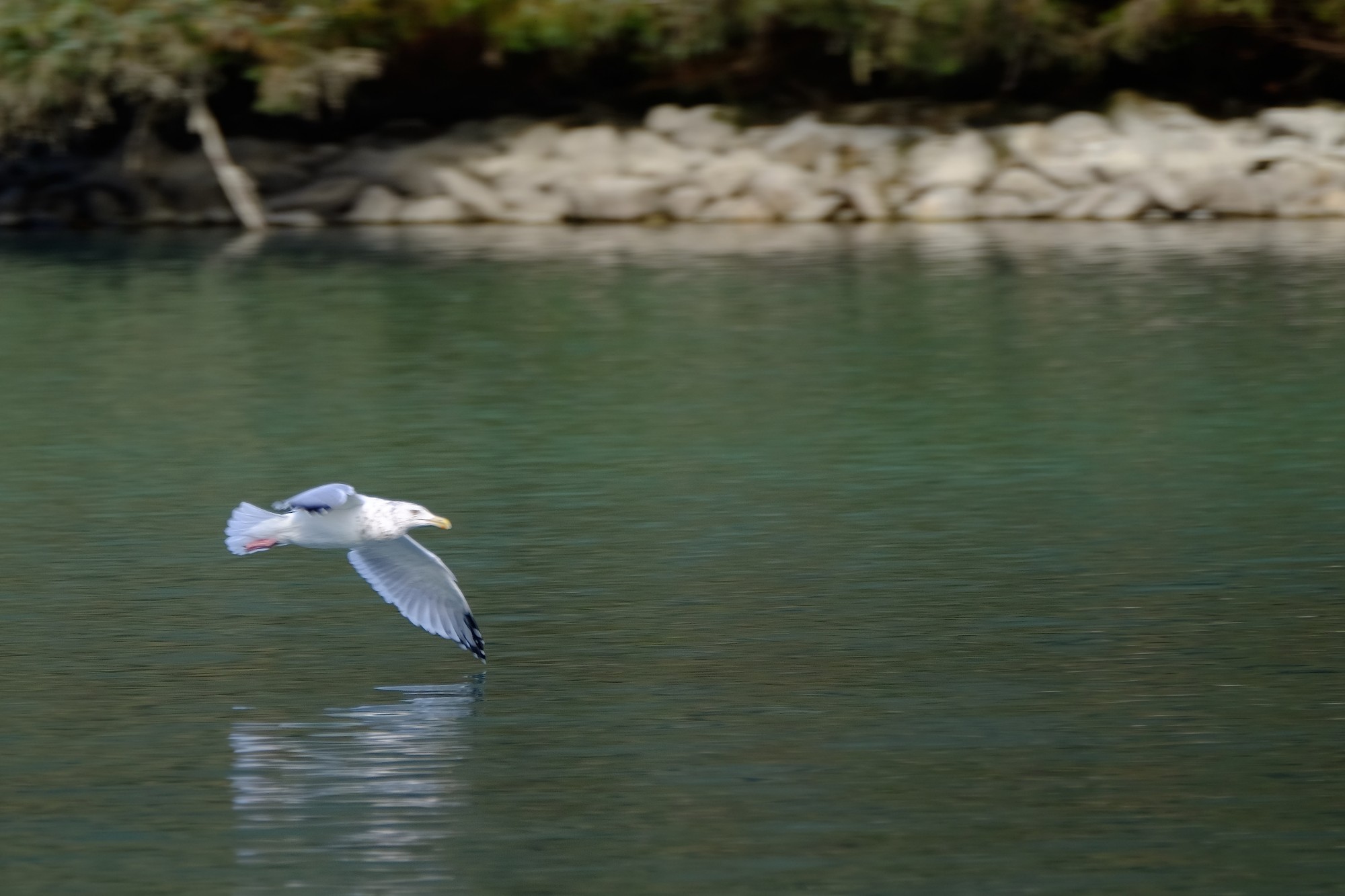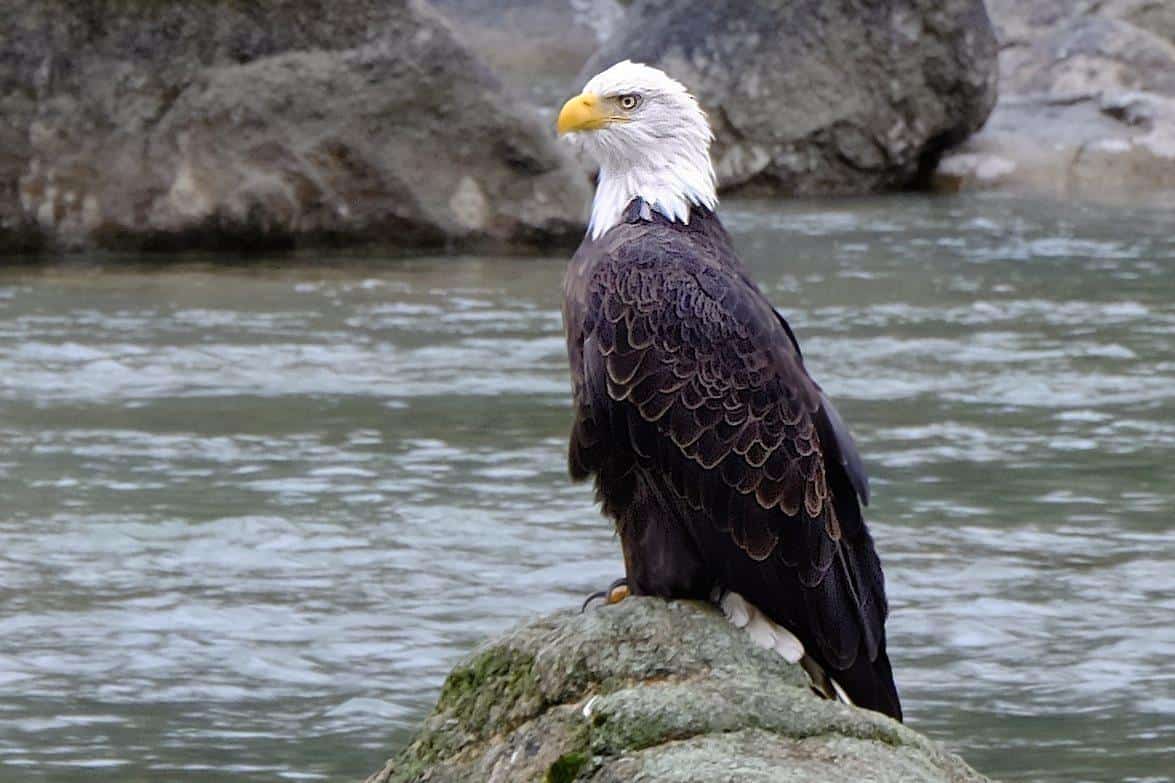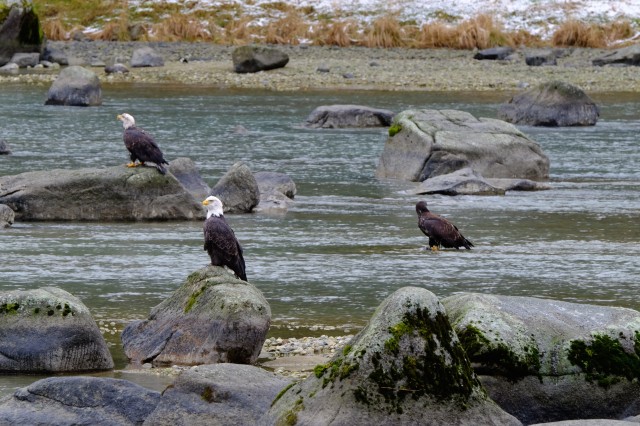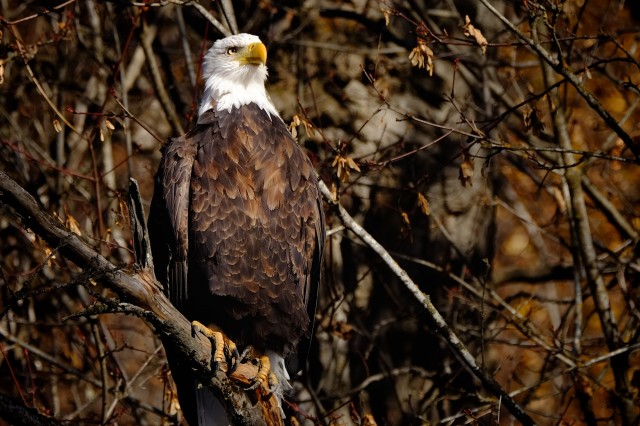To most overlanders traveling through Alaska, Haines Junction is little more than a wide spot in the road. One of only a few notable intersections for hundreds of miles in either direction, they see the tiny town in the Yukon as nothing more than a place to refuel and grab a cheeseburger before pressing on. Despite its striking setting below the ice capped escarpments of Mount Martha Black, few take notice of the road leading south into the mountains. That highway, paved wide and smooth, skirts an expanse of protected lands so vast it would take a hundred lifetimes just to explore half of it.
Yet––most overlanders don’t make the turn. They continue their push north into the interior, or east towards the lower 48, never knowing the splendor just off their main route.
Mount Martha Black is an imposing mass of rock and ice. It sits at the intersection of the Haines Highway and the Alcan. It serves as a suggestion to turn south to see more majestic peaks.
As a former resident of Haines I was well aware of the visual treasures that awaited as we turned the HEMA truck off the Alcan and southward. The low light of October cast an etherial glow on the peaks to the west luring us further off the well traveled path. Known locally as the Haines Highway, its 142 mile stretch of pavement is without question one of the most striking roads in North America and one of my favorite drives. At the southern tip of the highway is the coastal town of Haines, a place my wife and I had left more than a decade prior, all of our worldly belongings packed tightly into two SUVs. I consider Haines the most beautiful place on Earth, and just so that doesn’t sound like a misplaced superlative, I think it is as magnificent as anyplace I’ve visited in the Alps, Himalayas, or Andes.
I am easily bewitched by mountains and the Haines Highway’s linear gallery of peaks, glaciers, and endless vistas is positively breathtaking. Although both sides of the road are captivating, it was the western side that earned our constant gaze, particularly for me knowing it hid an impressive secret. Just beyond the first row of mountains sits one of the largest collections of protected wilderness lands in the entire world.
A patchwork of Canadian and American parks and preserves, it totals more than 37,000 square miles. Within Canada’s jurisdiction that includes the Kluane and Tatshenshini-Alsek parks. Inside our own borders, we have the majestic coastal mountains and inlets of the Wrangle-St. Elias and Glacier Bay National parks, two of the most stunning and pristine wilderness areas in our hemisphere. When butted up against the Tongass National Forest just to the south, a district that envelops the entirety of Southeast Alaska, that creates a public area which balloons to over 65,000 square miles. It’s roughly the size and shape of the state of Florida.
As we made our way towards Haines the route slipped between Kathleen and Dezadeash lakes, both of which are massive and hemmed in by huge peaks. Campgrounds dotted either side of the road which gradually climbed from its 2,000 foot elevation to a high point nearing the Alaskan border at over 3,500 feet. That ascent culminated in a captivating view with the Chilkat mountains on full display and a towering mass known as the Guardsman looming over the road ahead.
Above: The Guardsman stands sentinel over the highway. Below: Kathleen lake is massive in size and resemble the fjords in Haines.
Just before arriving at its terminus, the highway passed through the American border and followed the banks of the braided Chilkat River. A of jewel of Alaska, this stretch of road is home to the Chilkat Bald Eagle Preserve. If you have yet to see our national symbol up close, the drive along the river will provide ample opportunity to do so with some trees shouldering the weight of half a dozen eagles.
Nestled on the waistband of a narrow peninsula between the Chilkat and Chilkoot Inlets, the township of Haines sits at the nexus of mountain, river, and fjord. Within view of its 2,000 residents tower ragged peaks with several glaciers clinging to their high buttresses and dipping into the temperate rain forest below. A quiet community and home to a small fishing fleet, tourism is a big draw, but has not overwhelmed the town as it has in other parts of the state.
The views of the town, and the views from town in all directions, have been featured in magazines all over the world. And the views get better as winter takes hold and paints the mountains white. With some of the largest tides in the world, the exposed rocks in this frame are frequently submerged by more than 15 feet of water.
On the heels of a long journey from Fairbanks, we were eager to get out of the truck to spend some time visiting the many intimate corners of the Haines borough. We took a short drive along the coast to Chilkoot lake, where in summer it is common to see brown bears. With our late fall arrival, we were perfectly timed to see a dozen eagles as they picked at the last rotting carcasses of spawned-out salmon. Where the lake and ocean connected via a short span of river, high tide had brought harbor seals into the fresh water, their dog-like faces poking just above the water’s surface.
With storm clouds building we returned to town and bought the necessary supplies for a few days sequestered in our rental cabin. We settled in for the season’s first winter storm which by day’s end had dropped nearly 8-inches of wet coastal snow. Our sundries included soup makings, quantities of butter commensurate with the threat of an oncoming winter storm, and two growlers of micro-brew procured from the award winning Haines Brewing Company. Had we never been able to leave I think I would have been fine with that outcome.
For the few overlanders to venture to Haines, they invariably do so because it is one of only two road-accessible ferry ports in the northern portion of Southeast Alaska. As much as it breaks my heart, I have heard of overlanders arriving in Haines only hours prior to their ferry departure. Having spent several years in Haines, leaving far too much of it unexplored, I can’t imagine just passing through. For those with ample time to spend, Haines presents near endless adventure opportunities.
During the prime summer months, visitors can raft the Chilkat, sea kayak in the many inlets, hike the surrounding peaks, or fish in one of the local rivers. Wildlife viewing includes chances to see bears, eagles, porcupine, moose, sea lions, harbor seals, sea otters, porpoise, humpback whales, and the occasional orca. In the winter months the aurora borealis dances above the Chilkats and throngs of heli-skiers from around the world convene to take advantage of the areas infinite ski opportunities. It’s also my favorite place to sit in a chair, beer in hand, making my best effort to just take it all in.
As much as I would have loved to stay, our few days in Haines came to an end just as the heavy grasp of winter took hold. We loaded the truck, made the short drive to the ferry terminal, and boarded the MV Kennicot for our four day journey back to the lower 48. Standing on the deck of the ferry as the white buildings of Fort Seward passed in and out of view, I hoped the next time I came to Haines it would not be for just a brief visit.
Do I still think it is the most beautiful place on the planet? Absolutely. -CN
The History of Haines
The first native Alaskans understood the importance of the Chilkat Valley and the wealth of natural resources it provided. Known as the Chilkat Tlingits, these first residents started constructing villages and fishing camps as early as 10,000 years ago. Today there are several known archeological sites along the river leading into Haines which date to the late 1200s. The region’s fecund growing season provided access to a wide variety of berries, mushrooms, and dozens of other wild edibles the natives used to feed their growing communities. This in addition to the five species of salmon in the rivers as well as a host of marine mammals they could harvest. The Chilkat valley also served as an important trade corridor which the locals controlled giving them great wealth as they commanded commerce with their neighbors in the interior.
During the late 1700s the Vancouver Expedition brought Europeans to the area for the first time. Their exploration of the many fjords and islands of the upper Lynn Canal heralded the age of fur trade sparking the interest of Russian and European trappers like the Hudson Bay Company. In 1867 the territory now known as Alaska was transferred to the United States from Russia ushering in a new era. In 1869 William Henry Seward arrived to survey the area for the US Government. With boundary disputes between the US and Canada a reoccurring problem, the US Army commissioned the construction of Fort Seward in 1903 which still stands today at the center of the Haines borough, its white Victorian buildings an iconic landmark for the township.
The construction of the fort came on the heels of the Klondike Gold Rush in 1898, the mass event that brought tens of thousands of adventure seekers to Haines and Skagway, just 15 miles up the fjord. Fort Seward and its famous Chilkoot Barracks would be heavily used by the American military to police the region until the 1940s. In 1959, after Alaska was awarded full statehood status, many small communities like Haines became official boroughs, and shortly after took over Fort Seward as part of its community holdings. Today the influences of the former fort, the draw of adventure seekers, and the history of the Chilkat Tlingits, define the area in perfect harmony. A history 10,000 years in the making.
The Chilkat Eagle Preserve
Spanning a six mile section of river just outside the town limits of Haines, the Chilkat Eagle Preserve provides visitors with an unsurpassed opportunity to view Bald Eagles in their natural habitat. Every fall beginning in late September, as many as 4,000 eagles congregate to take advantage of the last salmon run of the year. Their numbers are so great they spill out of the preserve and into the various areas in and around Haines. For the wildlife photographer, or those who would like to become one in the span of a day, the Chilkat river is a must see.



